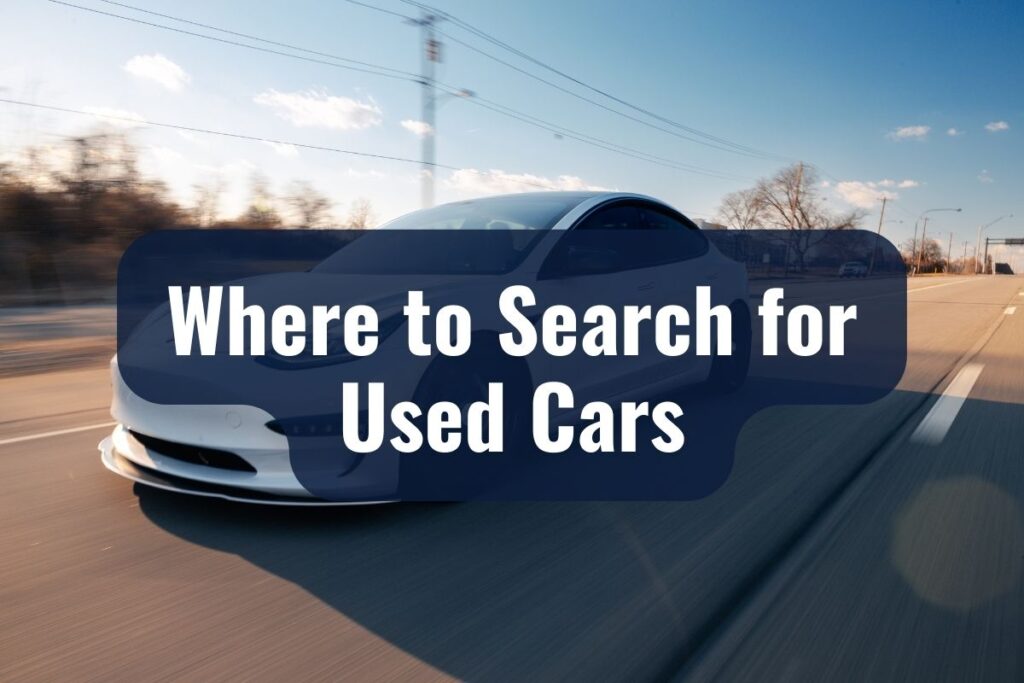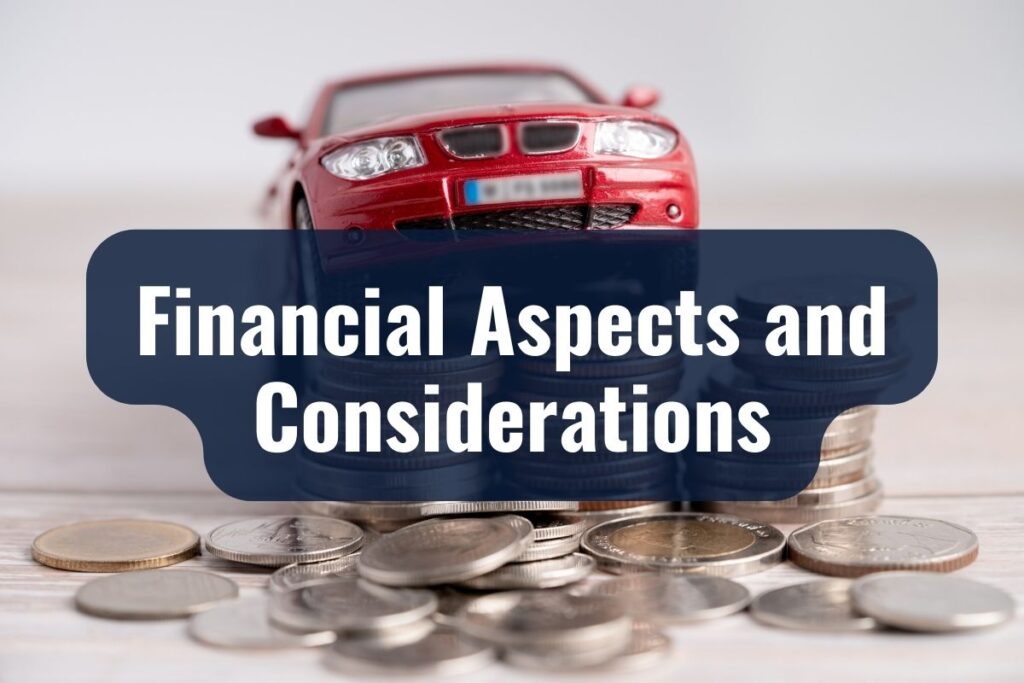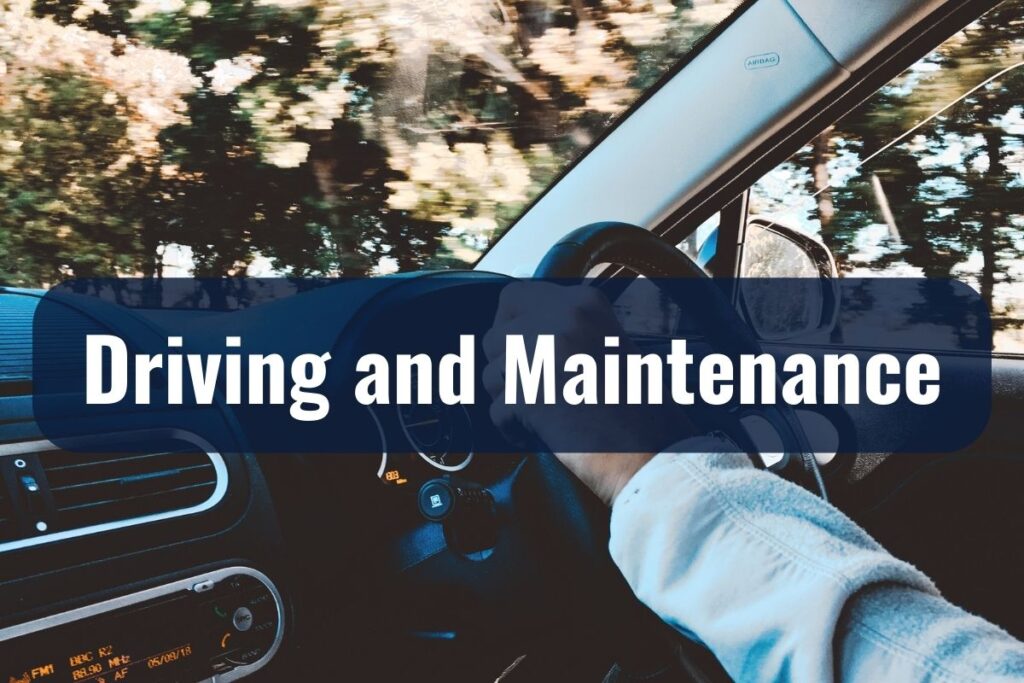As a foreigner, diving into the Dutch car-buying world can feel like uncharted waters. The Netherlands has its own set of regulations, popular car choices, and market dynamics.
Whether you’re a student on a budget, a professional relocating for work, or a family looking to explore every nook and cranny of this beautiful nation, understanding how to purchase a used car will serve you immensely. Our journey begins here, shedding light on the intricacies of the Dutch used car market.
Key Takeaways
- Navigating the Dutch used car market requires understanding its unique dynamics.
- Several reliable online platforms and dealerships can help foreigners find used cars.
- Comprehensive documentation ensures a legal and hassle-free vehicle purchase.
- Financial foresight and consideration can save significant costs in the long run.
- A thorough check of a car’s condition is pivotal before finalizing any purchase.
- Negotiation, grounded in respect and research, can lead to a favorable deal.
Understanding the Dutch Car Market
The Dutch car market, like its vast landscapes and rich cultural tapestry, offers a fascinating blend of choices and trends. Before venturing into a purchase, gaining insights into the dynamics of this market can provide a significant advantage, ensuring you make choices aligned with both your needs and local preferences.
Popularity of Certain Makes and Models
The Dutch have a penchant for reliability and efficiency. Hence, it’s no surprise that brands like Volkswagen, Opel, and Peugeot frequently dot the roads.
Compact cars, given the narrow city streets and the premium on parking space, are especially favored in urban areas. However, depending on where you plan to reside or travel, it’s essential to gauge the type of vehicle best suited for your journey.
Eco-Friendly Cars on the Rise
The Netherlands is at the forefront of the eco-friendly movement. The government’s push for sustainability is mirrored in the car market, with a rising demand for hybrid and electric vehicles.
This shift impacts the availability and pricing of used cars, as many Dutch citizens opt to trade in their older gasoline models for newer, greener alternatives. For a foreigner, this could mean a plethora of well-maintained, used gasoline cars available at competitive prices, but also an opportunity to join the green wave with a range of hybrid or electric options.
A Market Driven by Practicality
When observing the cars on Dutch roads, one might notice an emphasis on functionality over flashiness. While luxury brands do have their niche, many prefer vehicles that are economical, practical, and durable. It’s a market sentiment driven by the Dutch ethos of ‘doe maar gewoon’ – roughly translated to ‘just be normal.’
Imported Cars: A Notable Segment
Given the Netherlands’ strategic location and robust trade networks, there’s a significant influx of used cars imported from neighboring countries. While these vehicles can sometimes offer variety and value, it’s crucial to be aware of their history and maintenance, as they might differ from cars originally purchased in the Netherlands.
Where to Search for Used Cars

Stepping into the realm of the Dutch used car market, the avenues through which one can find a suitable vehicle are numerous. The key is to approach this quest with a discerning eye and an awareness of the most reliable sources. After all, it’s not just about finding a car; it’s about discovering one that aligns with your needs, budget, and the trustworthiness of its origins.
Local Dealerships
One of the most traditional methods, local dealerships provide a tangible experience. You can inspect vehicles firsthand, engage in face-to-face negotiations, and often benefit from some form of dealer guarantee. Cities and larger towns will usually have a mix of brand-specific dealerships and general used car lots.
Tip: Even if you’re not fluent in Dutch, many dealers, especially in larger cities, will have staff who speak English, given the international nature of the Netherlands.
Online Platforms
In today’s digital age, online platforms have become a convenient avenue for car hunting. Websites like Marktplaats, Autoscout24, and Gaspedaal offer a plethora of options, ranging from individual sellers to professional dealerships. Their filters can help narrow down choices based on your preferences.
Tip: Always ensure to verify the legitimacy of listings. Meeting sellers in person, preferably at their residence or place of business, and having the car inspected can safeguard against potential online scams.
Considering Location
The difference between urban and rural can be more than just scenery. Urban dealerships, especially in cities like Amsterdam or Rotterdam, might have higher prices due to the increased demand and overhead costs. Conversely, exploring options in smaller towns or rural areas could unearth some hidden gems at more attractive prices.
Tip: If you decide to explore dealerships outside urban centers, it’s prudent to inform them in advance about your language preference. While English is widely spoken, a heads-up ensures smoother communication.
Community Boards and Expat Groups
Sometimes, the best recommendations come from those who’ve walked the path before you. Expat forums, community boards, and social media groups can be treasure troves of insights, personal experiences, and sometimes even direct listings from those looking to sell their cars.
Tip: Engaging with these communities not only aids in your car search but also helps in building connections and understanding other nuances of living in the Netherlands.
Legal Aspects and Documentation
The intricate dance of buying a used car anywhere in the world is often punctuated with paperwork, and the Netherlands is no exception. However, armed with the right knowledge, you can navigate these steps with confidence, ensuring your car purchase is seamless and above board. Let’s delve into the essential legal aspects and documentation you should be acquainted with when venturing into the Dutch used car market.
The Kentekenbewijs – Dutch Vehicle Registration Certificate
Central to any car purchase in the Netherlands is the ‘Kentekenbewijs’, which is the vehicle’s registration certificate. Split into two parts—Part I outlines the car’s details, while Part II serves as proof of ownership.
Tip: Always ensure that the details on the Kentekenbewijs match the vehicle in question. Any discrepancies can lead to complications during the ownership transfer process.
Transferring Ownership – The ‘Overschrijven’
Once you decide on a car, the next step is the ‘Overschrijven’, the process of transferring ownership. This can be done at post offices, some supermarkets, or RDW-recognized companies.
Tip: Both the seller and buyer should be present during the ‘Overschrijven’. Make sure to receive the transfer certificate and the new Part II of the Kentekenbewijs, which confirms your ownership.
Mandatory Insurance – WA (Liability Insurance)
Before you can hit the road in your newly-acquired car, you must ensure it’s insured. The minimum requirement is the WA (Wettelijke Aansprakelijkheidsverzekering) insurance, covering damages caused to third parties. However, comprehensive insurance options are available, offering more extensive protection.
Tip: Compare insurance options online, taking into consideration the car’s age, make, and model, as well as your driving history, to find a suitable plan.
APK (General Periodic Inspection) – Ensuring Roadworthiness
Every car in the Netherlands needs to undergo the APK, a mandatory periodic inspection to ensure it’s safe and environmentally compliant. The frequency of these checks varies based on the car’s age and fuel type.
Tip: Always check when the car’s next APK is due. Purchasing a car with a recent APK can save immediate additional expenses and give a level of assurance regarding its condition.
Financial Aspects and Considerations

Embarking on the journey of acquiring a used car in the Netherlands involves more than just the initial cost of the vehicle. Understanding the underlying financial elements is crucial to ensure a smooth transition from the buyer to the proud owner. Let’s delve into the myriad of financial considerations that come into play when purchasing a used car in this picturesque country.
Initial Costs
The price tag on the car is merely the beginning. When budgeting for your purchase, it’s essential to factor in additional costs, such as transfer fees, potential inspection costs, and any immediate maintenance the car might need.
Tip: It’s wise to set aside a contingency fund, especially if buying from a private seller. This ensures you’re not caught off guard by any unforeseen repairs or adjustments.
Taxes
BPM (private motor vehicle and motorcycle tax): Originally intended as a luxury tax, BPM is now focused on environmental factors. While most used cars have had this tax paid by the first owner, if you’re considering an imported vehicle, additional BPM might be applicable, dependent on its emissions and age.
Road Tax (Motorrijtuigenbelasting): Depending on the weight, fuel type, and province, owning a car incurs a periodic road tax. Eco-friendly vehicles might benefit from discounts or exemptions.
Tip: Use online tools provided by the Dutch government to calculate potential BPM and road tax for your chosen vehicle.
Insurance Costs
Beyond the initial acquisition, monthly or annual insurance premiums are a recurring expenditure. As mentioned earlier, the minimum requirement is WA insurance, but comprehensive plans will naturally have a higher cost.
Tip: Always shop around. Different insurance providers offer varied premiums based on factors like age, driving history, and car specifications. Some even provide discounts for expats or those with international driving experience.
Financing Options
If you’re not looking to pay the entire amount upfront, the Netherlands offers various financing options. Banks, credit institutions, and even some dealerships provide car loans.
Tip: Thoroughly research and compare interest rates and terms. Some institutions might have special offers for foreigners or those with a stable income in the Netherlands.
Depreciation and Resale Value
Like anywhere else, cars in the Netherlands depreciate. However, certain makes and models, especially popular and reliable ones, might hold their value better.
Tip: If you anticipate selling the car in a few years, consider its potential resale value. It might influence your decision on which vehicle to purchase.
Checking the Car’s Condition
Ensuring you’re investing in a reliable vehicle isn’t just a matter of finance but also of ensuring safety and longevity. The exterior sheen or the allure of a well-furnished interior can sometimes overshadow underlying issues. However, a meticulous examination of the car’s condition is paramount. Here’s a guide to ensuring that the used car you’re considering in the Netherlands is not just visually appealing but also mechanically sound.
| Aspect | What to Check | Quick Tip |
| Exterior Examination | Signs of rust, dents, mismatched paint | View in daylight and dry conditions. |
| Under the Hood | Engine condition, leaks, belts, battery terminals | Consider hiring an independent mechanic. |
| Interior and Electronics | Upholstery, electronics functionality | Beware of unusual odors hinting at damage. |
| Test Drive | Car’s performance, engine sounds, brake efficiency | Turn off distractions for a focused test. |
| Service History | Regular maintenance records, major repairs | A consistent service history is a green flag. |
Exterior Examination
Begin with a thorough walk around the car, looking for signs of rust, dents, or mismatched paint which might indicate past accidents.
Check the condition of the tires. Uneven wear might hint at alignment issues.
Tip: It’s best to view the car in daylight and dry conditions. This ensures that you get an unobscured view without the rain or poor lighting masking potential issues.
Under the Hood
A clean engine bay isn’t just about aesthetics; it can be indicative of a well-maintained car. Check for any signs of leaks, damaged belts, or corroded battery terminals.
While a certain amount of wear and tear is expected, any unusual noises or visible damage could be cause for concern.
Tip: If you’re not well-versed with car mechanics, consider taking along a knowledgeable friend or hiring an independent mechanic for an assessment.
Interior and Electronics
Inspect the upholstery for excessive wear, tears, or stains. Ensure the seats adjust correctly and the seat belts are functional.
Test all electronics: windows, locks, radio, navigation system, and air conditioning should all be in working order.
Tip: Pay attention to any unusual odors. A musty smell might indicate past water damage.
Test Drive
Beyond visual checks, a test drive can provide insights into the car’s condition. Listen for any irregular sounds from the engine or brakes.
Test the car in various conditions – accelerate on highways, navigate through city streets, and test the brakes in safe conditions.
Tip: During the test drive, turn off the radio and other distractions. This helps you focus on the car’s performance and any potential anomalies.
Service History and Documentation
A well-maintained car will often have a documented service history. This not only shows regular maintenance but can also indicate how the car was treated by its previous owner(s).
Check for consistent oil changes, parts replacements, and any major repairs.
Tip: A sporadic service history might be a red flag. Regular maintenance is a sign of a diligent owner and a likely well-cared-for vehicle.
Negotiating and Sealing the Deal

The final stretch of your used car purchase journey in the Netherlands hinges on the art of negotiation. While the very notion of bargaining can be daunting to some, especially in a foreign land, it’s a pivotal step that can lead to significant savings and, more importantly, peace of mind. With a blend of tact, information, and respect, here’s how you can navigate the negotiation process and conclude the transaction on a high note.
Research and Set a Budget
Before diving into negotiations, arm yourself with knowledge. Knowing the average market price of the car model you’re eyeing can set a benchmark.
Establish a clear budget for yourself. This not only helps in keeping your finances in check but also gives you a firm stance during negotiations.
Tip: Remember that setting a rigidly low budget might limit your options. It’s a balance between getting a good deal and ensuring the quality of your purchase.
Open with Respect
Begin the negotiation with a genuine compliment about the car. This sets a positive tone and shows the seller that you value their offering.
However, don’t shy away from pointing out legitimate concerns or flaws you’ve noticed. These can be leverage points for price negotiation.
Tip: Cultural sensitivity is essential. The Dutch appreciate directness, but it should always be coupled with politeness.
Use the Car’s Condition as a Negotiating Tool
If you’ve identified issues or potential repairs during your inspection, use them as talking points. Estimating the cost of these repairs can be a basis for requesting a price reduction.
However, ensure your requests are reasonable. A minor cosmetic flaw, for instance, might not warrant a significant price drop.
Tip: Coming prepared with repair estimates from mechanics or service centers can lend weight to your negotiation.
Be Ready to Walk Away
If the negotiation isn’t aligning with your expectations or budget, be prepared to walk away. Sometimes, this very act can prompt the seller to reconsider and present a more favorable offer.
However, it’s essential to differentiate between standing your ground and being overly rigid. A good deal is often a middle ground between the buyer’s and seller’s expectations.
Tip: Convey your decision to walk away with grace. Thank the seller for their time and leave the door open for potential future discussions.
Finalize with Clear Documentation
Once you’ve reached an agreement, ensure every aspect of the deal is documented. This includes the final price, any agreements on repairs or additional inclusions, and details of the ownership transfer. Both parties should retain copies of all agreements and transaction proofs.
Tip: Consider making payments through traceable methods, like bank transfers, rather than cash. This provides a clear record and can be helpful in case of any discrepancies.
Driving and Maintenance

Once the paperwork is signed and the keys are in your hand, a new phase begins, the experience of driving and caring for your vehicle on the Dutch roads. The Netherlands, with its intricate blend of historic cities, scenic countryside, and robust infrastructure, offers a unique driving experience.
Coupled with the responsibility of maintaining your newly acquired vehicle, this chapter demands attention, respect, and a touch of adventure. Let’s embark on this journey, ensuring your car serves you faithfully while you explore the Dutch terrains.
Understanding Dutch Driving Etiquette
Dutch roads are renowned for being well-maintained and well-signposted. However, they’re also shared with a plethora of cyclists. Always be attentive to cycling lanes and give the right of way when necessary.
Respect speed limits. Built-up areas typically have a limit of 50 km/h, while highways range from 100 to 130 km/h. Always be alert for signposted changes.
Tip: Familiarize yourself with Dutch road signs and regulations. A refresher course or a local driving guide can be invaluable for newcomers.
Regular Maintenance
Just like regular health check-ups for us, your car needs periodic attention to ensure its longevity and performance. Regular oil changes, brake checks, and tire rotations are paramount.
The Dutch climate, especially the wet conditions, can wear out certain car components faster. Keep an eye on parts like wiper blades and brake pads.
Tip: Build a relationship with a local garage or service center. They can provide tailored advice for your car’s maintenance in Dutch conditions.
Seasonal Preparations
The Netherlands experiences a wide range of weather conditions. Winterizing your car, including checking the antifreeze levels and considering winter tires, can be crucial for the colder months.
Conversely, ensuring your air conditioning is functional and checking coolant levels becomes paramount in the summer.
Tip: Always have an emergency kit in your car tailored to the season, including items like de-icing spray in winter or extra water in summer.
Fueling and Efficiency
Fuel prices in the Netherlands can be relatively high. Knowing your car’s fuel efficiency and driving in a manner that maximizes it can lead to significant savings.
While petrol and diesel are commonly available, the Netherlands is also rapidly expanding its electric charging infrastructure.
Tip: Consider using apps or services that inform you about the cheapest fuel stations in your vicinity or guide you to nearby charging points for electric vehicles.
Cleanliness and Care
Given the often damp climate, cars in the Netherlands can be prone to rust if not cared for. Regular washing, especially the undercarriage, can prevent salt and dirt accumulation.
Keep the interior clean and dry. This not only ensures a pleasant driving environment but also prevents mold and odors.
Tip: Consider investing in protective coatings or treatments, especially if your car will be parked outdoors frequently.